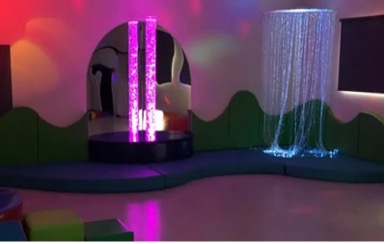Occupational therapy in the Snoezelen® Room: Teachers’ and therapists’ knowledge and perceptions of the changes in children's behaviour and performance
DOI:
https://doi.org/10.17159/2310-3833/2024/vol54no3a6Keywords:
multisensory environment (MSE), scholastic performance, level of arousal, sensory integration therapy (SIT), self-regulation, transfer of knowledge and skillsAbstract
Introduction:
The Snoezelen® room, a multisensory environment (MSE), is often used in conjunction with sensory integrative techniques. Therefore, it may be of support in school-based occupational therapy intervention. Research has documented positive changes in children’s performance in the MSE. However, research to suggest that changes could be carried over to external environments is limited. This study aimed to investigate the knowledge and perception of teachers and therapists regarding changes in children's behaviour and performance after therapy in the Snoezelen® room.
Methodology:
A descriptive quantitative cross-sectional survey design by purposive sampling was used. Teachers and therapists working with children who received occupational therapy intervention in the Snoezelen® room participated.
Results:
Descriptive and inferential statistics were utilized to determine strong positive, significant correlations found between the total impact of the Snoezelen® room and the children’s level of arousal, as well as their behaviour and scholastic performance, as conveyed by 30 participants. After therapy in the Snoezelen® room, improvement in level of arousal was ranked as the biggest change, which appeared to improve for hours upon return to the classroom.
Conclusion:
Children’s arousal levels changed positively due to sensory input, which carried over to the external environment. Due to this, most teachers and therapists perceived that the Snoezelen® room positively changed behaviour and scholastic performance, through improved level of arousal.
Implications for practice:
- The use of Snoezelen® rooms in schools, combined with sensory integration therapy (SIT), enhances children's self-regulation, which in turn positively impacts behaviour and academic performance.
- Strong, positive correlations were found between children's level of arousal and improvements in their behaviour and scholastic performance. Thus, Occupational therapy interventions in the Snoezelen® room significantly contribute to children’s ability to self-regulate, a key factor in achieving positive classroom behaviour and learning outcomes.
- Teachers and therapists perceive Snoezelen® rooms as beneficial, with 96.7% supporting their presence on school campuses to improve child behaviour through better self-regulation.
- Consistent with extensive research surrounding self-regulation of children, acquiring self-regulation skills in the early years lays the foundation for positive classroom behaviour and academic performance later.
Downloads
References
See PDF for full list of references

Downloads
Published
Issue
Section
License
Copyright (c) 2024 South African Journal of Occupational Therapy

This work is licensed under a Creative Commons Attribution-NonCommercial-NoDerivatives 4.0 International License.
How to Cite
- Abstract 194
- PDF 147
- PLAGIARISM Report 32



.png)